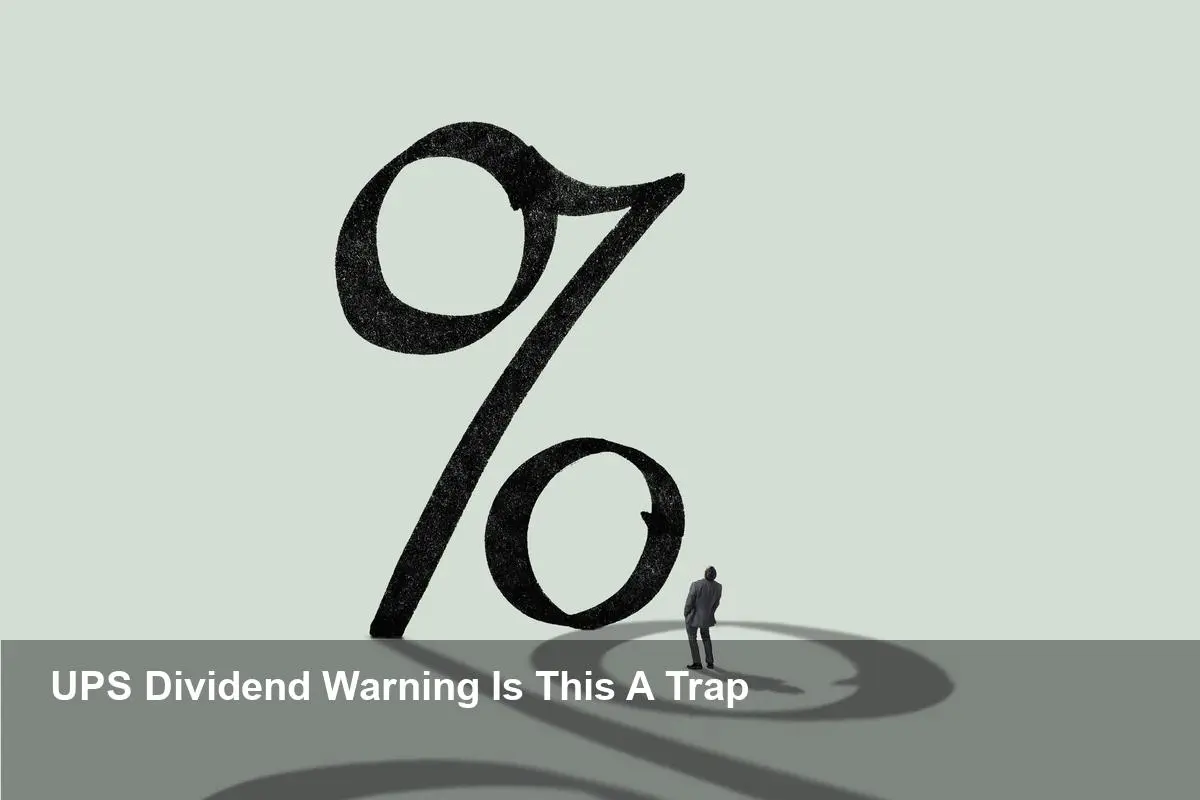Key Highlights:
- Plummeting Stock Price: UPS stock has collapsed by nearly a third in the last year and over 60% from its 2022 peak, artificially inflating its dividend yield to a precarious 7.5%.
- Critical Cash Flow Shortfall: The company’s free cash flow is dangerously insufficient to cover its dividend payments, forcing it to take on billions in additional debt to bridge the gap.
- Major Operational Headwinds: UPS is battling the combined impact of costly international tariffs and a strategic, yet painful, reduction in business with its top customer, Amazon.
- Uncertain Turnaround: While UPS has a plan to cut costs and grow in areas like healthcare, the dividend’s sustainability remains in serious doubt until financial improvements materialize.
A High-Yield Dividend on Shaky Ground
Shares of United Parcel Service (UPS) are presenting a tantalizing offer to income investors: a massive 7.5% dividend yield. This figure dwarfs the S&P 500’s average and leaves rival FedEx in the dust. However, the stock’s dramatic decline, which has shed over 60% of its value since early 2022, is a major red flag. This downturn raises a critical question: is this high yield an incredible opportunity or a classic dividend trap signaling impending financial trouble?
The Forces Battering UPS
Two significant challenges are hammering UPS’s financial performance. Firstly, evolving global trade policies and tariffs have increased the cost of international shipping, directly impacting the company’s volumes and profitability. Secondly, UPS is strategically scaling back its relationship with Amazon, its largest customer. The goal is to reduce Amazon-related shipping volumes by more than half to focus on more profitable segments. While this may be a sound long-term strategy, it’s causing significant short-term pain.
These headwinds are clearly visible in the company’s financials. Second-quarter revenue dropped by nearly 3% to $21.2 billion, and adjusted earnings fell 13%. More alarmingly, free cash flow has plummeted. In the first half of this year, UPS generated only $742 million in free cash flow, a stark contrast to the nearly $3.4 billion generated in the same period last year.
Funding Dividends with Debt
The drop in free cash flow has created a dangerous financial gap. During the first six months of the year, UPS paid out $2.7 billion in dividends—a staggering $2 billion more than the cash it generated. To cover this shortfall and a $1 billion stock buyback, the company’s long-term debt has ballooned from $19.5 billion to $23.8 billion. While UPS maintains a strong credit rating, funding a dividend with debt is an unsustainable practice that puts the payout at high risk.
Can the Turnaround Plan Save the Dividend?
UPS management is not standing still. The company has launched a two-pronged strategy to stabilize the business. It aims to achieve $3.5 billion in annual cost savings by closing facilities and reducing its headcount. Simultaneously, it is investing heavily in higher-margin operations, particularly healthcare logistics, through strategic acquisitions like Andlauer Healthcare Group.
The company has repeatedly reaffirmed its commitment to the dividend, calling it a “core principle” and a “hallmark of the company’s financial strength.” It even announced a marginal increase earlier this year. However, actions speak louder than words. Unless its turnaround plan yields substantial financial improvements soon, the pressure to align the dividend with actual cash flow could become overwhelming.
For now, the 7.5% yield comes with significant uncertainty. The wide chasm between its cash flow and its dividend obligations makes the stock a high-risk proposition. Investors should exercise extreme caution, as this enticing payout may indeed be too good to be true.
Image Referance: https://www.fool.com/investing/2025/10/26/is-this-75-yielding-dividend-too-good-to-be-true/
